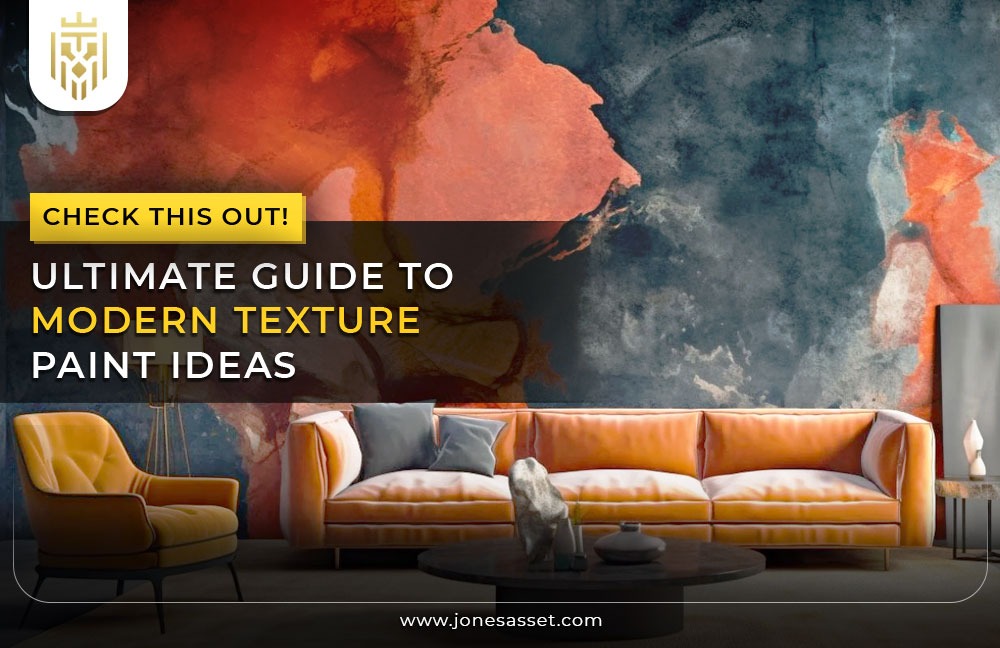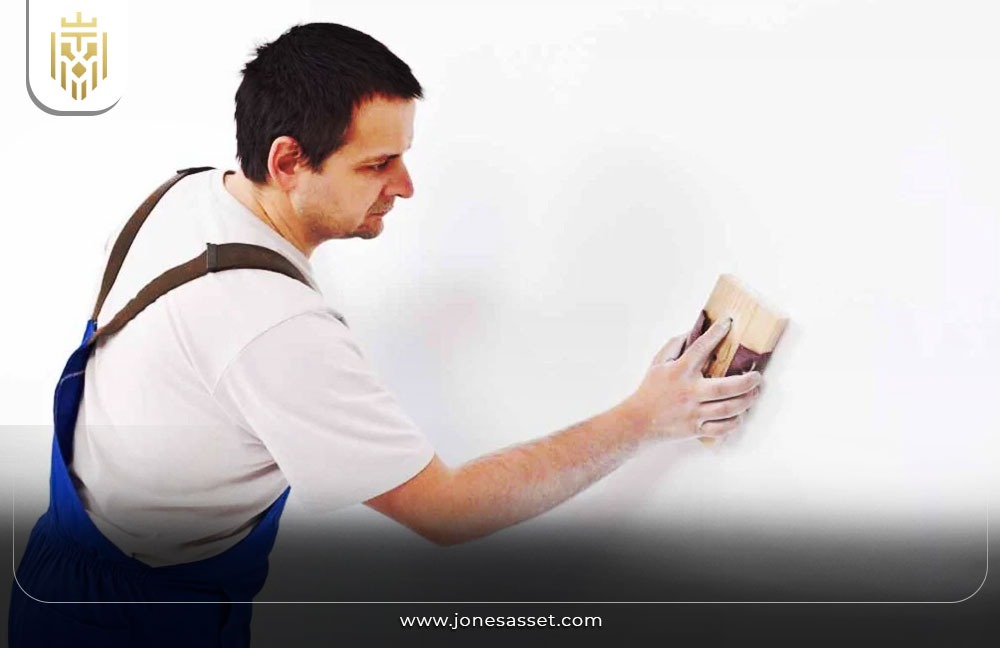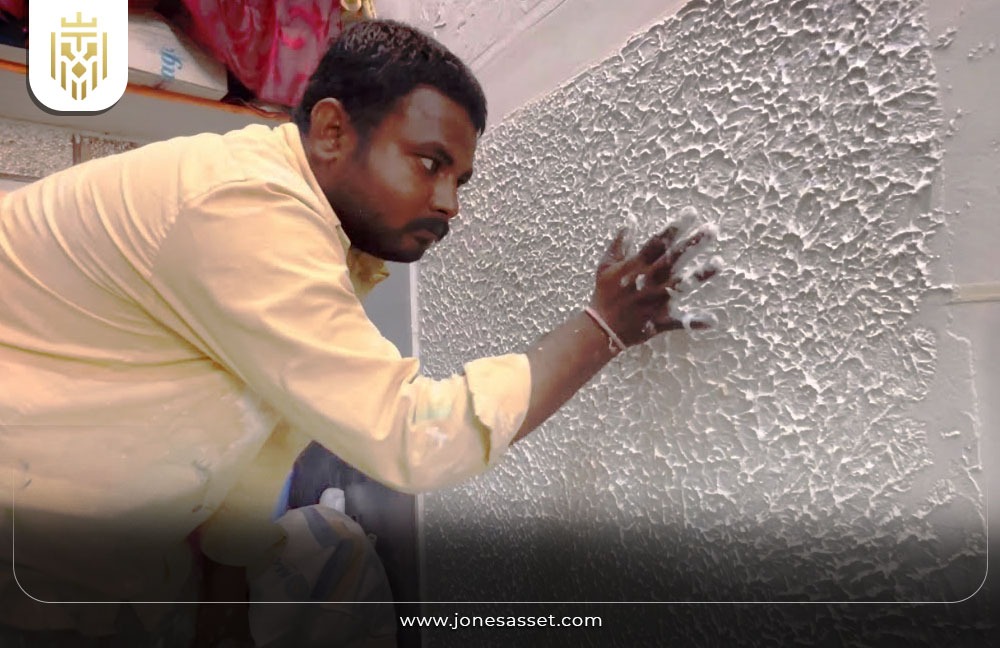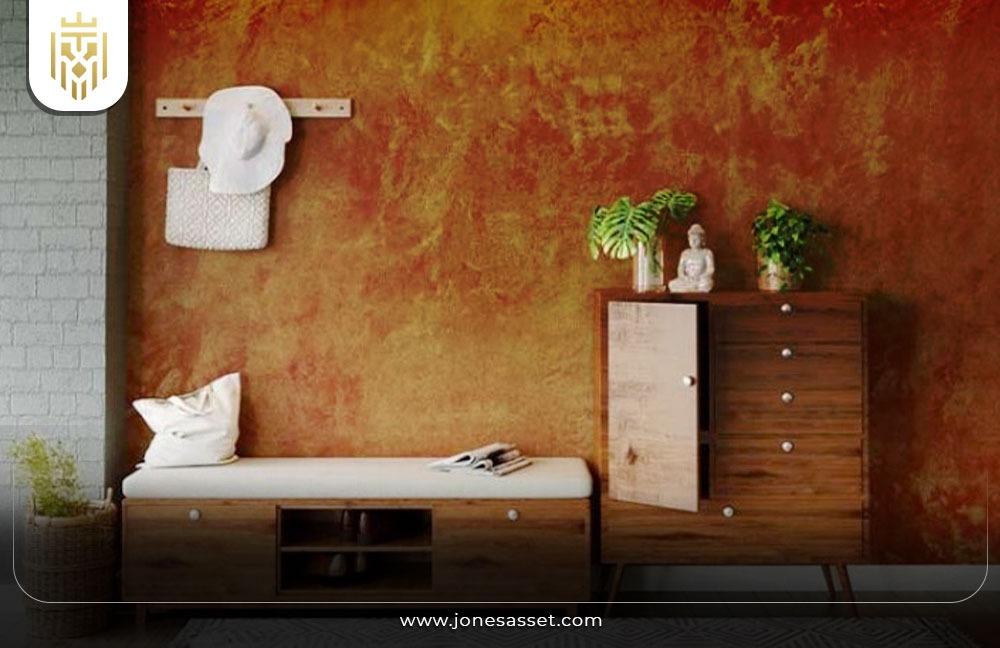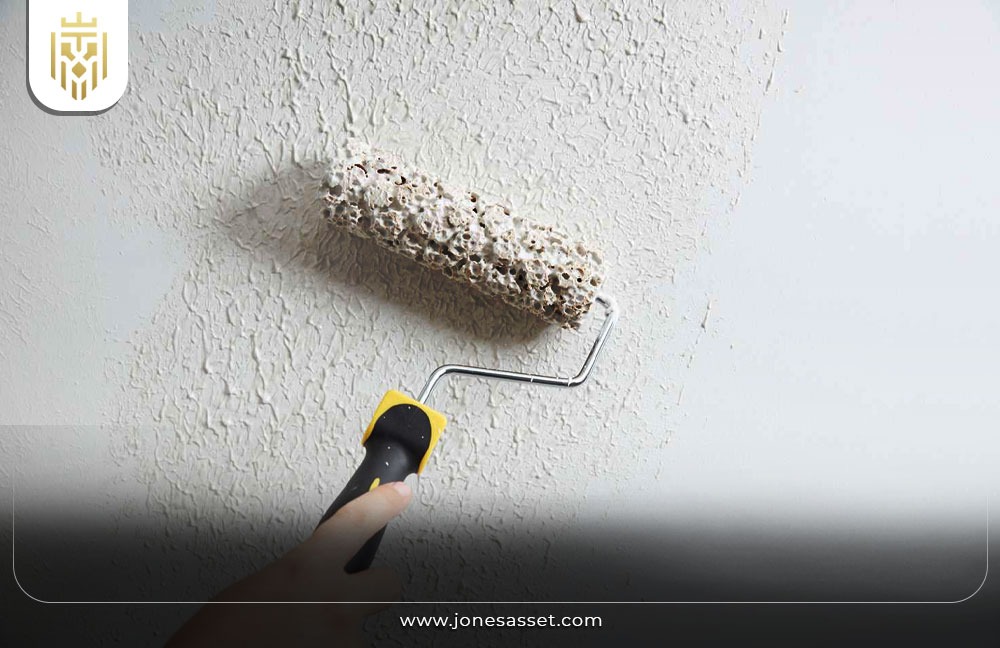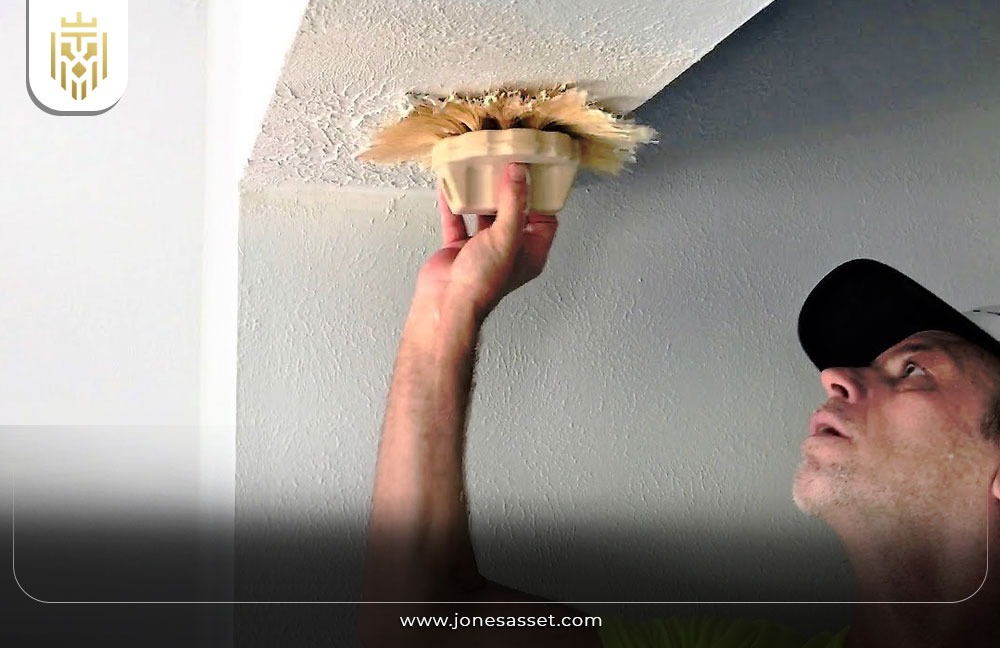What is Texture Paint?
Texture paint is a kind of decorative material, used to paint on walls and ceilings to have an imitation of some textures. Unlike the normal paint which is just colored and gives a uniform color when applied, texture paint has relief to it and can therefore be used to cover some irregularities and give a rougher finish than just a plain color. They are made in different finishes like sand, stones, marble, or any other finishing that may suit your house’s interior. Texture paint may be applied in various methods and with the aid of many tools to create various styles of folds, thus increasing the beauty of interior design.
How is texture paint different from normal paint:
It is distinct from typical paint in the way in which it is formulated and used to augment a building or home’s outer surface. Like the normal paint that gives out a smooth finish, texture paint contains materials such as sand, gypsum, and polymers to give out a textured look. This makes texture paint thicker and stronger enough to cover the wall imperfections than the general paint. Besides, texture paint can be modeled and shaped in different patterns and designs as compared to normal paint which gives a flat or glossy look only. The texture paint needs some form of application and this process is quite different from that of applying a normal paint of brushes and/or rollers.
Why Choosing a texture paint is a good idea?
Selecting the texture paint has multiple advantages. Besides, it complements the design of a room by providing distinction, depth, and richness through the numerous patterns and finishes. Texture paint also hides features on the wall such as cracks, dents, and other irregularities on the wall, giving the wall a better and neater finish. This makes it very durable and as a result, it is hardly countertops prone to wear and tear, therefore lasting beauty. Moreover, texture paint can be applied to any style and design, ranging from rural to contemporary outlook, as well as flexibility in the designer.
How to Apply Texture Paint Designs:
We shall go through the various ways to apply texture paint designs, as each of them requires different ways to apply and different maintenance measures:
Prepare the Surface:
Priming or preparing the surface is very important for the texture paint job. First, one needs to prepare the wall by washing it with warm water and soap, in a bid to remove all the dirt, dust as well as grease on the wall. Depress the existing cracks or holes with putty and level the instruments’ surface by sanding. Sealing is suggested to make the texture paint have a better grip on the wall’s surface and to make sure that the color is even. Surface preparation is therefore very crucial in that it provides a clean and neat surface that can be given a lasting and appealing finish.
Choose your Tools:
Tools to use with texture paint should be chosen properly for the best results to be obtained. Some of the ordinary tools used in plastering hence apply include trowels, sponges, brushes, and rollers used in applying texture. Depending on the generalized pattern, you may require items such as combs or stamps. The kind of tools to be used depends on the kind of surface texture and finish that is needed. Make sure that all the equipment regarding the application process is available so that the whole process of application is smooth for the project.
Mix the Paint:
Proper mixing enables the paint to have the right consistency and of course the right color. If using texture paint that requires the addition of water or any other additional part it must be done strictly as recommended by the manufacturer. When blending, it is advisable to use a stir stick, or in a larger solution a mechanical mixer. Make sure that the mixture is quite runny and that no lumps are present in it. Adequate mixing is vital in order you get the right texture and and sanding feel on the walls.
Apply the Base Coat:
It is wise to apply a base coat to prepare the surface it is going to be textured so that the texture paint can easily stick to the wall. Select the base color that is compatible with the textured finish. A roller or brush should then be used to apply a uniform thickness of the base coat on the surface that has been prepared. Wait until it dries before applying the next layer of texture paint on the gypsum board. Base coat if applied well contributes to the final outlook of the texture paint as well as its longevity.
Texture Paint Designs:
Texture paint designs differ from one another and provide many choices to improve the look of walls and ceilings. Categorically, texture paint enables creativity in interior design by presenting flowing and smoothly as well as strongly and openly patterned finishes. Techniques and tools then produce various effects desirable to various stylistic palettes. Some of the generally used materials include grainy, metallic, popcorn, and striping, where each of them offers a different look and style. Knowledge of its characteristics and uses applied can assist in choosing the best texture paint design for your area.
Grainy Texture Paint:
The grainy texture paint incorporates materials such as sand or silica, giving it a stony appearance with an undesirable texture. This finish is ideal for giving walls a more country look and is ideal for minor surface preparation work. They mostly utilize it in the sitting area, which could be the living area or the hall and corridors to give an inviting warmth feel.
Metallic Texture Paint:
Metallic texture paint has metal flakes dispersed in the paint to make the walls shine and give a reflective surface. This luxurious finish adds depth and sophistication to the room it’s applied to, be it an accent wall or a contemporary-styled home. Comes in different colors such as gold, silver, and bronze; the metallic texture paint makes any room look classy and contemporary.
Popcorn-Texture paint:
Popcorn texture paint, also referred to as acoustic or cottage cheese texture, has a sort of rough and uneven surface. It is commonly used for ceilings mostly due to its good absorption of sound and its ability to cover imperfections. This texture gives the area a retro or vintage look, which would perfectly fit a mid-century modern and eclectic house interior.
Royal purple texture paint:
Royal purple is another texture paint that gives a flashy royal look as the shade is very dark and has a touch of texture on it. This color brings formality and elegance into the design of the room by creating a more dramatic and opulent feel. To create a regal & sophisticated look, this product is very effective when used as an accent wall in the bedroom or living area.
Roll-on Textured Paint:
Roll-on textured paint is quite simple to apply using a rolling technique with a painting roller, and the texture is smooth and consistent. This option can be adapted to imitate such finishes as stucco or sand depending on the roller used. It is easy to use for individuals who engage in home improvement tasks, which makes it easy to give an added boost to walls.
Striped Texture Paint:
Wall painting that involves the use of painter’s tape and textured paints to make lines on the wall results in what is known as Striped texture paint. The unciform style is more modern and dynamic adding attractiveness to the general appearance of the room while creating playful contrast with color and texture. It is suitable where detailing is needed and designing of interest walls.
Knockdown Texture Paint:
Knockdown texture paint is applied with a trowel or spray gun and then the surplus paint is “knocked down” with a drywall knife giving the textured surface a stucco-like look. This technique lays a pleasant smooth look, which is ideal for living and bedroom areas. It is also quite useful in concealing damages and enriching the exterior look of walls.
Slap Blush Texture Paint:
Slap blush texture paint is accomplished as a brush or trowel is struck against it while the paint is still wet which creates a random pattern. This technique of applying paint on walls provides a creative patterned design on the walls; no two surfaces are identical when applying this technique. It’s used effectively for establishing the center of attraction or imparting personality to a particular room.
Grey Texture Paint:
Grey texture paint offers class and improves spatial appearance with its smooth surface, and grey embodies neutrality. It could blend with many styles starting from the modern to the industrial ones. They give added depth and character to the walls while not overpowering the interiors which is great for dining rooms, living rooms, and bedrooms.
How to choose the right Textured Paint:
Selecting the appropriate textured paint depends on factors such as the room utilization, décor, and the lighting required. For areas that are used frequently, the choice of grainy or knockdown textures is optimal. Metals and royal purple paint the accent walls or any feature area royal, luxurious, and glamorous. Both roll-on and slap blush textures are ideal if one is interested in creating personalized DIY looks with different creative finishes. The lighting of the room; metals and light textures can brighten up the room while darker textures like grey add depth and style.
FAQs
1. What is texture paint?
Texture paint is a decorative coating that provides the walls and ceilings with the dimensions of depth. Unlike smooth and standard paint it forms a rough surface and works to hide defects and improve the outlook by producing different patterns and giving the desired surface finishes.
2. What are the types of Texture Paint?
There are varieties of texture paint, they are grainy texture, metallic texture, popcorn texture, roll-on texture, striped knockdown, slap blush, and grey texture paint. It is important to note that each type provides various visual effects and finishes for the various designs and uses.
3. How is texture paint different from normal paint?
It is a type of paint that is applied by the inclusion of additives such as sand or polymers in the paint to give a rough surface. It is thicker, has better adhesion, and can easily hide the flaws of the surface; normal paint gives an even coat of paint and nothing more.

